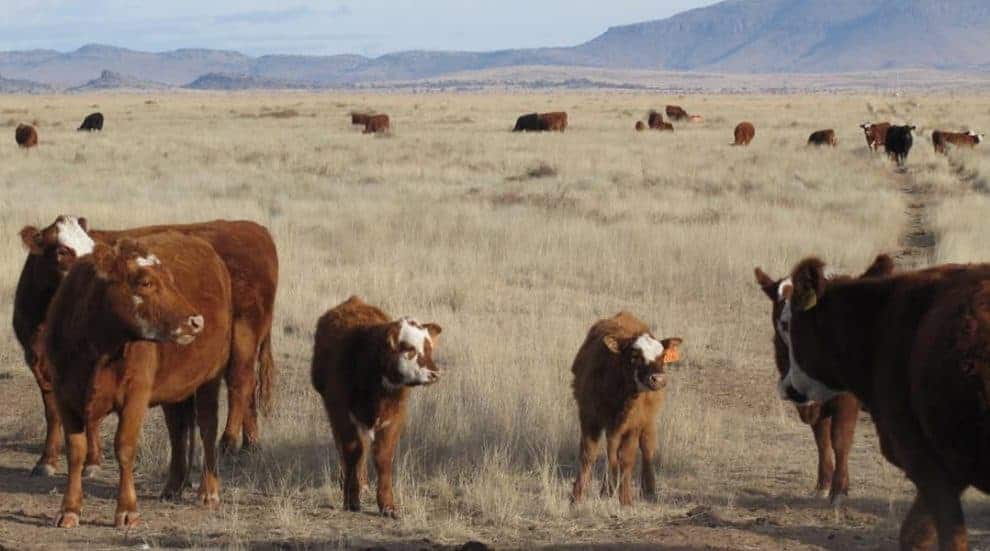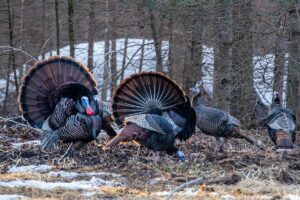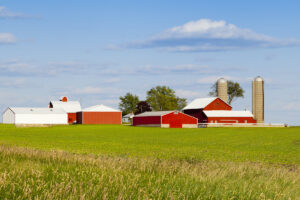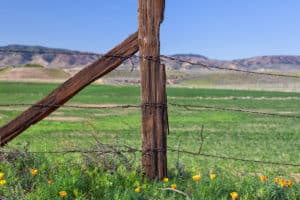Ever wonder if cows are doing more harm than good to your land? Well, with the beef market as high as it is right now, there’s no real incentive for cattle producers to do anything drastic. However, in some areas cattle grazing and specifically the type of grazing management system has come under scrutiny. For the average landowner, there are some lessons learned and a number of experts who would like to help you improve the conditions of your habitat and the profitability of cattle operations.
Texas Parks and Wildlife Department operates 47 Wildlife Management Areas (WMA) in Texas. Ten of these promote grazing as a legitimate habitat management tool. The Kerr WMA has demonstrated several grazing systems through the years for experimentation purposes, including: 3 pasture-4 herd, 3 pasture-1 herd, High Intensity Low Frequency and short duration. What they have learned is that longer rest periods between grazing and shorter duration grazing periods actually yielded the fastest recoveries, fostered the strongest root systems, and produced better general plant health. Since 1984, a 25-pasture short duration grazing system has been implemented. One herd of cattle is rotated every 90-120 days and the stocking rates are adjusted according to long-term weather conditions. This style of adaptive management promotes a healthy landscape that includes several stages of plant growth, which meets the needs of many game and nongame species.
In arid West Texas in the northern-most parts of the Chihuahuan Desert, there’s an 11,000-acre ranch that uses cattle to groom and improve the desert grasslands just as the native bison did for centuries. At the Mimms Ranch, CEO Robert Potts will tell you how cattle are a tool to improve the rangelands. Potts shares, “…cattle are an important part of healthy range ecology. When managed as a grazing system, you can create or manipulate habitat to benefit birds, plant health, and soil fertility. What we’re seeing is more grass and more cover. For birds, it’s important for feeding, nesting, and for just staying out of the really heavy winter winds that whip across the desert plains out here.” The Mimms Ranch rotates cattle daily and has a full-time manager.
The type of system being run on the Mimms Ranch and the Kerr WMA could be referred to as Adaptive Multi-Paddock Grazing (AMP) and involves managing livestock using multiple smaller paddocks to provide periods of short grazing and long recovery to mimic the predator-influenced herd migrations of animals like ancestral bison and elk, from which these ecosystems co-evolved. There are many promoters of this system, like Allen Savory with the Savory Institute, or Allan Williams of the Grassfed Exchange or Holistic Management International. Even groups like the Audubon Society are examining the evidence of these claims with their Prairie-bird Initiative demonstration sites; evidence that practitioners employing these techniques are producing quality bird habitat, even during drought and other extreme weather pattern scenarios.
Peer-reviewed research by Dr. Richard Teague with Texas A&M University shows that in north central Texas, ranches practicing AMP grazing can sequester 30 tons of carbon more per hectare over 10 years compared to conventionally grazed ranches. conventionally grazed ranches. So maintaining quality native grasslands with cattle grazing has a value to the owners for the additional amenities and revenue opportunities it affords – including eco-tourism or hunting revenue. Also, more intensive management of native grasses will not sacrifice productivity, but the opposite – provides forage which is resilient resulting in financial sustainability from reduced input costs. Lastly, stewardship like this will have both on-site and off-site impacts (eg, environmental benefits) that improve natural resources.
From a wildlife stand-point, controlled grass and shrub growth will improve forbs production by reducing plant competition. Forbs are many times more valuable to wildlife species than grass and are relished by many species including deer and birds like Turkey, Quail and Pheasants. Using cattle, which are predominantly grass-roughage eaters, to reduce grass height favors increased forb production. In Texas, there were many years that white-tail deer hunting leases abandoned cattle as a management tool. The results were that the understory thickened and brush began to encroach and crowd-out good deer habitat. Many sites have since re-introduced cattle and reclaimed marginal habitat. Using livestock to benefit wildlife habitat is a practice so common and so effective that it is promoted by Ag Extension offices in Texas.
So whether to support your business interests, sporting interests, or because of your innate passion for the land – try to mimic Mother Nature’s longstanding husbandry between hooved beasts and their beloved grasslands. Two rules of thumb: make sure to measure the grass at the end of the growing season and adjust your stocking rate according to your estimated grass productivity and bunch the animals into dense herds which rotate often between paddocks. The impacts of doing so can help you hold-out during longer periods without rain, improve your property’s habitat, and additionally benefit the soil and the carbon cycle; maybe enough so that you will tip the balance in favor of cows, seeing them as less of a headache and more of paying ecological dividends on and off-site beyond what they are valued at market.
This article comes from our colleague and Field Sport Concepts affiliate, Matt Heinemann of Conservation Consultancy based in Wimberley, Texas.
This content may not be used or reproduced in any manner whatsoever, in part or in whole, without written permission of LANDTHINK. Use of this content without permission is a violation of federal copyright law. The articles, posts, comments, opinions and information provided by LANDTHINK are for informational and research purposes only and DOES NOT substitute or coincide with the advice of an attorney, accountant, real estate broker or any other licensed real estate professional. LANDTHINK strongly advises visitors and readers to seek their own professional guidance and advice related to buying, investing in or selling real estate.










Add Comment